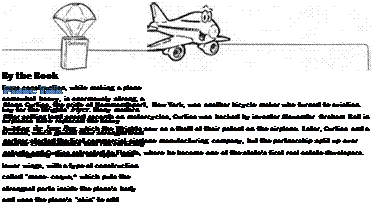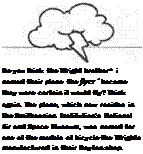Lilienthal, Chanute and Langley
For all their independent thinking, the Wrights relied heavily on the groundbreaking experiments of three creative geniuses who formed a small group of competitors vying with each other to make the first controlled, powered flight. In addition to studying the work of Lilienthal, the brothers stayed in touch with Paris-born engineer Octave Chanute and intellectual gadfly Samuel Pierpont Langley.
Chanute was working in the United States on the same thorny problems of aerodynamics, stability, and aircraft control that Lilienthal faced in Germany. He was too old to do any of his own flying, being in his 60s when he came into aviation, so Chant hired pilots to do the actual air work. Chanute had an engineer’s mind and a keen sense of the forces at work in flight. The Wrights relied heavily on his research, and it was actually Chanute who convinced the bicycle building brothers to design their flyer using the sturdy strut-and-wire design; Wilbur and Orville had been inclined to rely on the more delicate bat-wing design favored by Lilienthal.
So in a way, Octave Chanute, who has been largely pushed aside by history, is responsible for the evolution of aircraft design. The truss construction he advocated continues to play a role in airplane design to this day, and is still used in modern biplanes made for stunt pilots.
 |
The third member of the inspirational trio that lit the way for the Wrights’ first controlled flight was a mostly self-taught engineer and architect from Roxbury, Massachusetts, named Samuel Pierpont Langly. When he wasn’t conducting groundbreaking astronomy research or heading up the Smithsonian Institution, Langly made important discoveries in aerodynamics and aircraft design.
In fact, Langly came within days of beating the Wrights to the Holy Grail of the first powered, controlled flight. In November 1903, a month before the Wrights’ success in North Carolina, Langly’s singlewing aircraft, or “monoplane,” was twice launched from a houseboat floating in the Potomac River near Washington, D. C. In both attempts, the airplane, which Langly called the Aerodrome, fell into the river and cracked up; the pilot, a young Cornell University student named Charles Matthew Manly, nearly drowned both times.
Manly, incidentally, may have been a flop as a pilot, but he had a certain magical gift for designing engines, the technological hurdle that, more than anything, delayed the Wrights’ first flight. In fact, Manly designed an engine for Langly’s Aerodrome that produced between 40 and 50 horsepower, making it a remarkably powerful motor for the time.
Turbulence
 |
For the Wrights, it was the engine questions, more than the design of their airplane, that kept them awake at night. They needed to reach a workable compromise that yielded light weight but also enough horsepower to propel the craft on its rails. The airplane, dubbed the Flyer, had no wheels, which was not surprising considering that none of their test gliders featured wheels. It took off from a wooden monorail track and landed on wooden skids. The weight of wheels, tires, and all the suspension gear that goes along with them was simply too heavy for those early flights.
“Turning” Point.
Although researchers like Chanute, Langley, and Lilienthal deserve a portion of the credit for inspiring the structure and design of the Flyer, one of the plane’s most important innovations was something the Wrights figured out without anyone else’s help. Before their successful flight in 1903, the Wrights suffered the same problems the other pioneers did when trying to control the plane’s direction in flight. No one had figured out a good way to turn the airplane. But while fiddling around with a long cardboard box, the brothers experienced an epiphany that was to provide the margin by which they won the race for the first flight.
The brothers noticed that if they twisted the long box, one end would turn upward while the other would turn downward. They quickly devised a method to twist, or warp, the wings of their flying machines, which diverted the air passing over the wings and enabled a pilot to bank the wings. Now, the Wrights would be able to make controlled turns during flight, something that baffled the other experimenters. Together, the warpable wings, movable rudder, and front – mounted elevator to point the nose up or down allowed the Flyer to maneuver.











